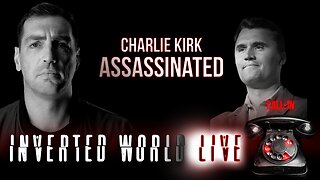Premium Only Content

Exploring Zoar Cemetery: History, Legends, and Haunting Stories
Before European settlement, the Kaurna people inhabited the land.
The district was surveyed in 1849, as part of the Hundred of Munno Para. Early settlers arrived in the area in the 1850s, clearing the land to grow cereal crops and graze animals. William Friend Penfold was one of the first to buy land there, and in 1853 he opened the Plough and Harrow Hotel (which closed in 1893 and was destroyed by fire in 1899). In 1856 he subdivided land he had bought on section 4057, and a village was laid out at the junction of Penfield and Argent Roads (the Argents being another family of early settlers). That intersection is now surrounded on three sides by RAAF Base Edinburgh.
Most of the settlers were converted over to the Bible Christian Church (a Methodist denomination) by Reverend Samuel Keen of Angle Vale.[6] The Zoar Bible Christian Church was built in 1855, which was demolished in 1956, although the small cemetery remains. (It is near the Max Fatchen Expressway, accessed from Argent Road or the Stuart O'Grady Bikeway.
In the early years, the village had two general stores, a police station, the church and the hotel. Penfield Post Office opened around 1856 and closed in 1951. A government school was opened in 1874 and remained open until about 1940. Another church, Sturton Primitive Methodist Church was further south, and the building still stands in the RAAF property, visible from Sturton Road.
Two possibilities as to the origin of the area's former name, Peachey (or Peachy) Belt, which persisted until 1858, have been suggested: that it came from the native peach trees, or quandongs, which covered the area; or that the surveyor was Peter Peachey and the name came from him.
A report in The Register on 10 November 1859, from a meeting in Peachey Belt, mentions a dinner given by James Philcox (a land speculator who named Evanston) at "Smidt's Hotel" before his departure from the colony in 1853. It is not clear whether this referred to the Plough and Harrow or another hotel in the wider area. The report says that Philcox had urged his 13 tenants to turn their attention to the cultivation of vineyards.
A large amount of land in the area between Penfield and Salisbury was compulsorily acquired by the Australian Government's Department of Munitions in 1940 to establish a munitions factory, the Salisbury Explosives Factory, during World War II. It led to the closure of the Penfield village. That site now includes RAAF Base Edinburgh, Defence Science and Technology Group and industrial premises.
#ghosttube
#paranormal
#cemeteries
#cemetery
#SouthAustralia
#explore
#history
#ghosthunting
#paranormalinvestigation
#spirit
#spirits
#Abnormalities
#Graveyards
#Graves
-
 2:08:03
2:08:03
Inverted World Live
5 hours agoCharlie Kirk Assassinated | Ep. 106
75.2K33 -
 3:01:07
3:01:07
TimcastIRL
6 hours agoCharlie Kirk Assassinated, Suspect In Custody | Timcast IRL
576K786 -
 5:44:49
5:44:49
Redacted News
9 hours agoTurning the Tide: 9/11 Justice in 2025 — Day 1 with Sen. Ron Johnson, Richard Gage and More
158K67 -
 2:48:00
2:48:00
TheSaltyCracker
6 hours agoYou're Being Hunted ReeEEStream 9-10-25
255K528 -
 13:09:56
13:09:56
LFA TV
20 hours agoBREAKING: CHARLIE KIRK ASSASSINATED - WEDNESDAY 9/10/25
353K123 -
 1:31:08
1:31:08
I_Came_With_Fire_Podcast
6 hours agoCheck Fire: God Bless Charlie Kirk
68.1K22 -
 1:13:35
1:13:35
Glenn Greenwald
8 hours agoCharlie Kirk Assassinated; NATO Alleges Russian Drones Flew Over Poland, and More | SYSTEM UPDATE #512
265K280 -
 1:46:28
1:46:28
Badlands Media
22 hours agoAltered State S3 Ep. 45: The Assassination of Charlie Kirk
139K19 -
 8:56:53
8:56:53
Dr Disrespect
15 hours ago🔴LIVE - DR DISRESPECT - THE FINALS - NEW SEASON 8 LAUNCH EVENT W/ THE SHOTTY BOYS
268K10 -
 LIVE
LIVE
RealAmericasVoice
3 days agoHOME OF REAL NEWS
3,278 watching